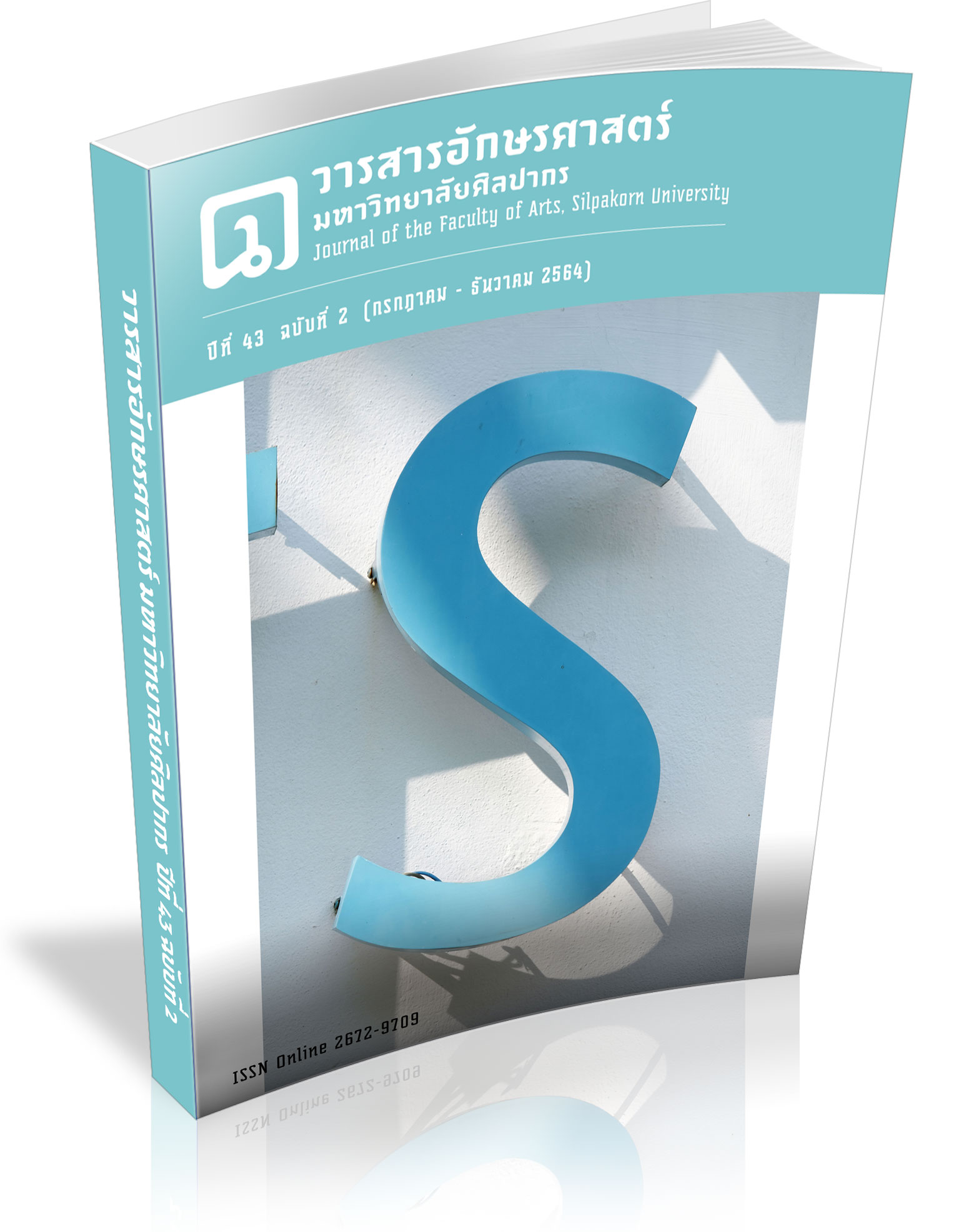Joss Paper and Air Pollution Awareness
Keywords:
Joss paper, Chinese culture, Particulate Matter (PM 2.5)Abstract
This article aims to present the state of research on practicing Chinese cultural rituals in Thailand that affects the environment and consider methods to decrease the pollution caused by performing these rituals. Moreover, the immigration of Chinese to Thailand, the rolls of Joss paper in Chinese culture and the effects of performing Chinese rituals are also mentioned. The Chinese cultural activity this article focusses on is burning joss paper toexpress dedication to one’s ancestors and the environmental effect thereof, namely causing Particulate Matter (PM 2.5) by burning the paper. The following methods to decrease pollution from burning joss paper are suggested by the Thai and Hong Kong Governments as well as researchers: 1) avoid burning the paper 2) burn joss paper in a closed furnace with a filtering system 3) produce joss paper from eco-friendly materials.
Downloads
References
Department of Health (2020). Department of Health reveals the poll result: during the Chinese New Year, 98% of people burn joss paper. Department of Health asking for reducing the burning to decrease PM. Retrieved 12 September 2020, from https://multimedia.anamai.moph.go.th/news/170163-01-ตรุษจีน/ (In Thai)
Environment Protecting Department (2011). Guideline on Air Pollution Control for Joss Burning at Chinese Temples, Crematoria and Similar Places. Retrieved 12 February 2021, from https://www.epd.gov.hk/epd/sites/default/files/epd/english/compliance_ass/others/files/EPD_Joss_Paper_eng.pdf
Health Effect Institute (2020). Cause- specific burden (Thailand, PM 2.5, Deaths). Retrieved 12 February 2021, from https://www.stateofglobalair.org/data/#/health/bar
Hu, M., et al. (2009). Characteristics of Polychlorinated Dibenzo-p-dioxins/Dibenzofuran from Joss Paper Burned in Taiwanese Temples. Aerosol and Air Quality Research, 9: 369- 377.
Kanokphongchai, S.-A. (2007). Thai - Chinese Way of Life in Siamese Society. Bangkok: Matichon. (InThai)
Kasikorn Research Center. (2019). Chinese New Year in The year of Golden Pig: Bangkokians expected to spend 13,560 Million Baht and Focusing on economical activities. Retrieved 12 September 2020, from https://www.kasikornresearch.com/th/analysis/k-econ/economy/Pages/z2957.aspx (In Thai)
Kasikorn Research Center. (2020). Spending less on This Chinese New Year. Retrieved 12 September 2020, from https://www.kasikornresearch.com/th/analysis/k-social-media/Pages/FB-CHNY20-20-01-20.aspx (In Thai)
Kasikorn Research Center. (2021). Chinese New Year 2021: Bangkokians’ spending toschrink 10.4%; COVID19 scare prompts more consumers to shop online. Retrieved 5 February 2021, from https://www.kasikornresearch.com/EN/analysis/k-econ/economy/Pages/Chinese-newspaper-z3185.aspx
Keaekliang, K. (2012). Localization and Chinese Culture in Thailand: A Case study of the Integrated Thai– Chinese Traditinal Pattern and Myths. Rompruek Journal, Krirk University, 30(2): 30-57. (In Thai)
Khezri, B., Chan, Y.Y., Tiong, L.Y.D., & Webster, R.D. (2015). Annual air pollution caused by the Hungry Ghost Festival. Environmental Science Processes & Impacts, doi: 10.1039/c5em00312a
Nibhatsukit, W. (2019). Role of the Chinese in the Thai Economy from the Ayutthaya period to the Reign of King Rama V. Journal of the Faculty of Arts, Silpakorn University, 41(2) : 246-262. (In Thai)
Phongpiachan, S., Apiratikul, R., & Nasanit, R. (2019). Manual to encounter PM 2.5. The silent killer. Bangkok: Baan Phra Arthit. (In Thai)
Pollution Control Department (2020). Government support producing and distributing low sulphur gas to decrease PM 2.5. Retrieved 12 December 2020, from https://www.pcd.go.th/pcd_news/10170/ (In Thai)
Qin, Z., Song, Y., & Jin, Y. (2019) Green Worship: The Effects of Devotional and Behavioral Factorson Adopting Electronic Incense Products in Religious Practices. International Journal of Environmental Research and Public Health, 16, 1-15. doi: 10.3390/ijerph16193618
Sikkhakosol, T. (2013). Chinese Festivals and Oblation. Bangkok: Matichon. (In Thai)
Sioajiw. (2011). Characteristics of Teochew. Bangkok: Mtichon. (In Thai)
Skinner, G. W. (1986). Chinese Society in Thailand: An Analytical History (P.Chatphollarak, C. Amphaiphan, S. Prakaythong, P. Kanchanatthiti, P. Boonyasiri, S. Thawichaprasit, Trans.). Bangkok: Thai Wattana Panich. (Original work published 1957). (In Thai)
Songprasert, P. (2004). Modern Chinese Overseas. Bangkok : BrandAge. (In Thai)
Suksamran, S. (1988). Religion and Ritual Belief of Chinese Community. Bangkok: Chulalongkorn University. (In Thai)
Wirunha, C. (2014). South East Asian World. The History Foundation. Nakhon Pathom: Silpakorn University. (In Thai)
Chinese New Year 2021: Bangkokians’ spending to shrink 10.4%; COVID-19 scare prompts more consumers to shop online.
World Health Organisation (2018). How Air Pollution Destroy our Health. Retrieved 12 December 2020,from https://www.who.int/news-room/fact-sheets/detail/household-airpollution-and-health
Downloads
Published
How to Cite
Issue
Section
License
Copyright (c) 2021 Journal of the Faculty of Arts, Silpakorn University

This work is licensed under a Creative Commons Attribution-NonCommercial-NoDerivatives 4.0 International License.
ผู้เขียนบทความต้องยินยอมในข้อกำหนดต่าง ๆ ของวารสารก่อนส่งบทความตีพิมพ์




